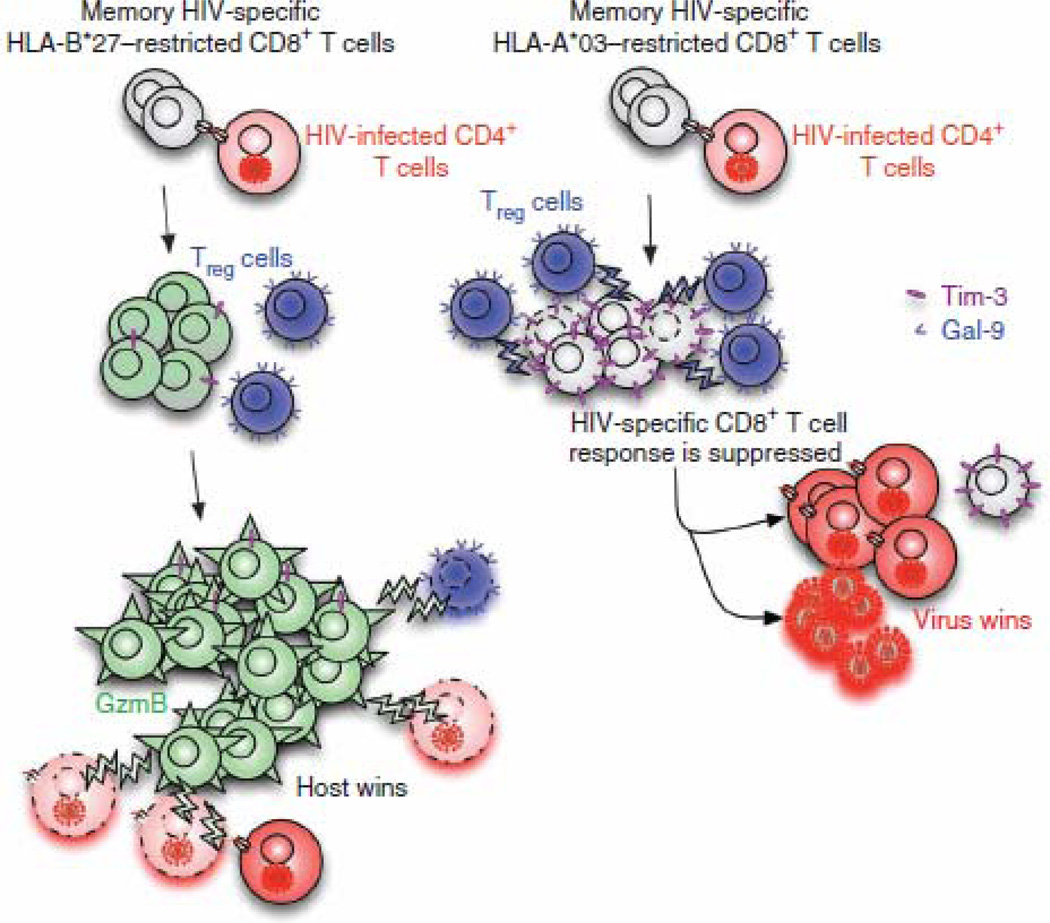Figure 6.
Model depicting how HLA-B*27– or HLA-B*57–restricted HIV-specific CD8+ T cells evade Treg cell suppression and subsequently control HIV replication. HIV-specific, HLA-B*27–restricted CD8+ T cells do not upregulate surface expression of Tim-3 upon recognition of their cognate epitopes on HIV-infected CD4+ T cells, whereas HIV-specific, HLA-A*03–restricted CD8+ T cells upregulate high surface expression of Tim-3. Treg cells suppress HLA-A*03–restricted CD8+ T cells owing to their high expression of Tim-3 but cannot suppress proliferation of HLA-B*27–restricted CD8+ T cells. Highly proliferating HLA-B*27–restricted CD8+ T cells upregulate high levels of GzmB and kill not only infected CD4+ T cells but also infected Treg cells that they encounter. Thus, HLA-B*27–restricted CD8+ T cells can control HIV replication during chronic infection, whereas HLA-A*03–restricted CD8+ T cells cannot.

